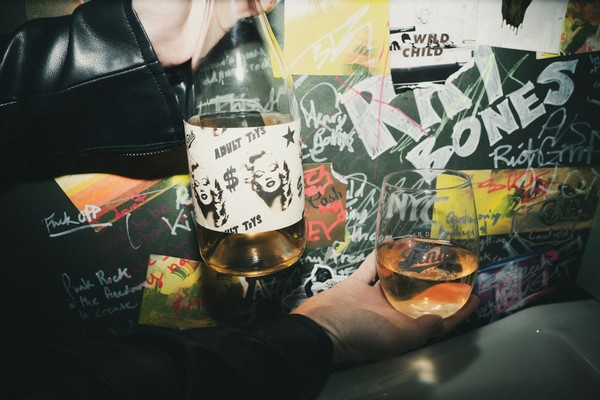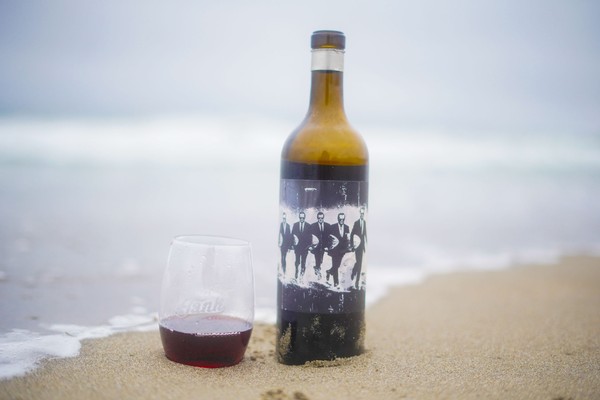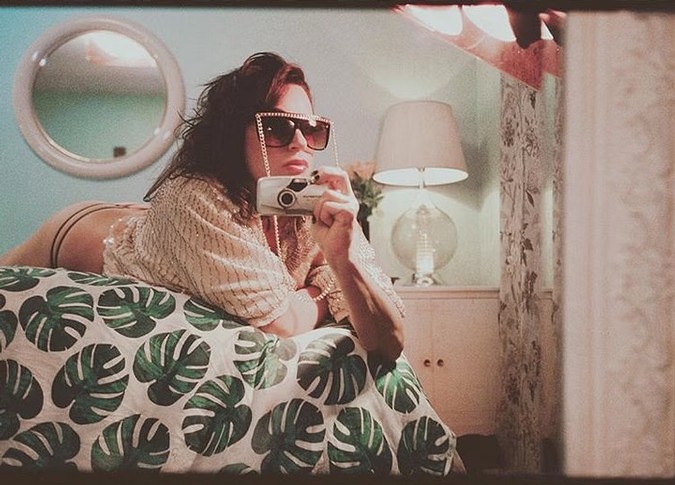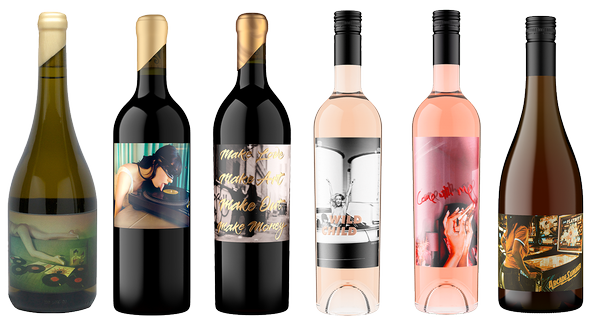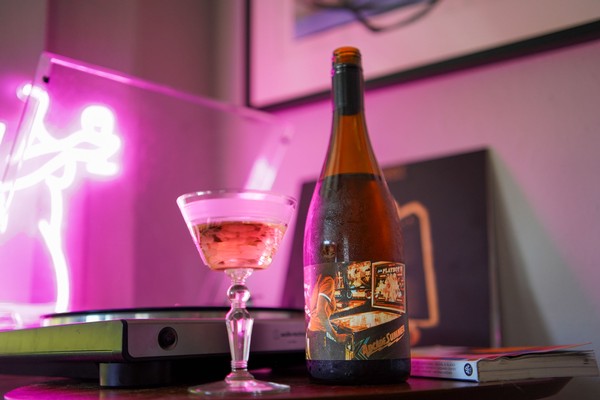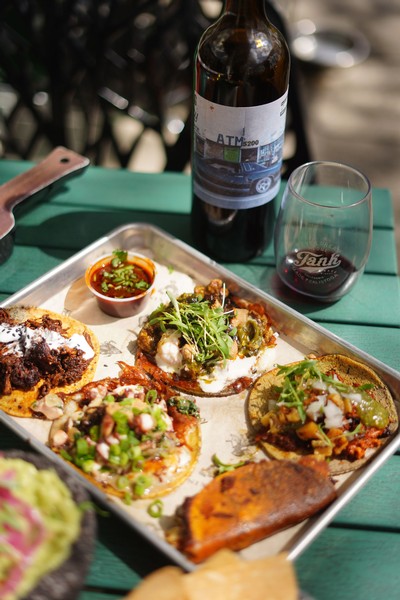Lubrication Blog
Tank Harvest 2024: A Wild Ride
Well, folks, another harvest is in the books! It was a wild one, with some unexpected twists and turns. But in the end, we brought in another beautiful crop of grapes, and we can't wait to share the wines with you. This year we scored 14 different varieties, and 65 tons of fruit across 7 different counties!
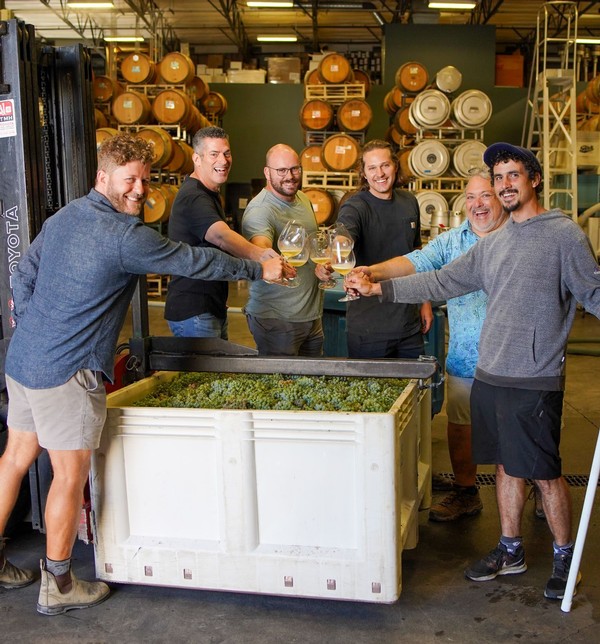
We kicked things off in early August with some of our favorite white grapes: Albariño and Gewürztraminer from McCormack Ranch in Rio Vista. These grapes always produce delicious, aromatic wines that are perfect for summer sipping.
Next up was Mourvèdre from Sierra de Montserrat Vineyard in Loomis. This is a workhorse grape that we use in many of our blends. It adds structure, complexity, and a beautiful dark fruit character!
We also brought in a good amount of Grenache and Counoise from Clos du Lac and LaRaia Vineyards in Loomis. These grapes will go into our 2024 Rosé and other lighter-bodied red blends like Bye-Bye Baby.
And of course, no Tank Garage harvest would be complete without Barbera! We picked up some of this beautiful fruit from Kammerer Vineyard in Lodi. This is generally the backbone of our famous Cal-Ital blends.
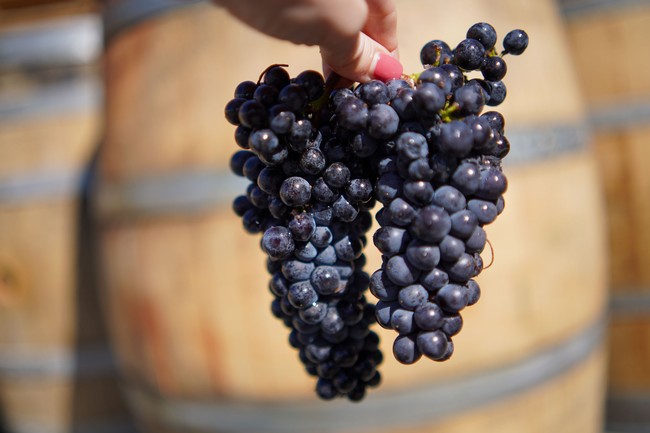
September was a busy month, with lots of different grapes coming in from all over the state. We started with Gamay Noir from Fenaughty Vineyard in El Dorado County. Gamay is characteristic of producing light, fruity wines that are perfect for chilling and enjoying on a warm day, like our ever-so-popular 2022 Juicy red wine.
Next up, Vermentino from Paso Robles. This is another great white grape that we're excited to be working with. It produces crisp, refreshing wines with beautiful minerality.
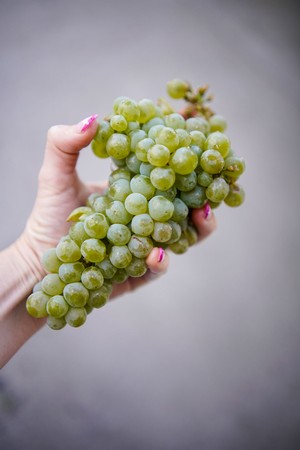
One of the highlights of the month was our Gamay harvest from Barsotti Vineyard. We picked the grapes at night to preserve their freshness and acidity. We then experimented with three different fermentation techniques: carbonic maceration, a natural process, and a more traditional style. We can't wait to see how these wines turn out!
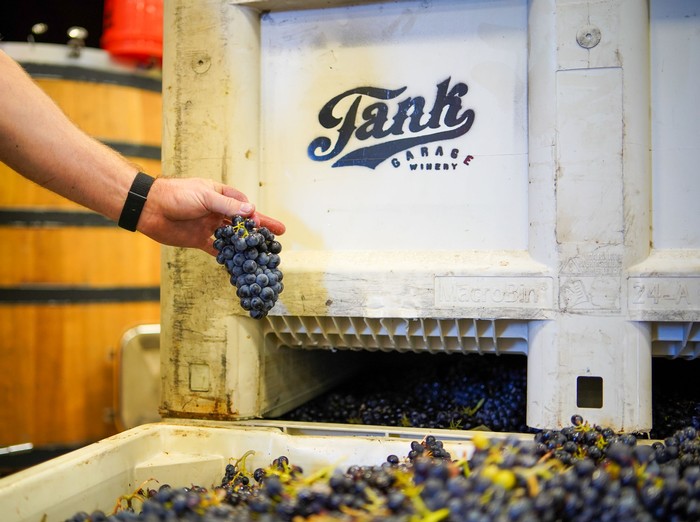
We also brought in more Barbera from Sierra de Montserrat Vineyard. This is a great vineyard that consistently produces high-quality fruit.Just when we thought we were in the clear, a heat wave hit in late September. We had to scramble to get some of our grapes picked before they got too ripe. But we managed to get everything in, and we're happy with the quality of the fruit.
In the final days of harvest, we brought in some Zinfandel from Paso Robles, Counoise from El Dorado, Malbec from Calistoga, Cabernet Sauvignon from Paso, and Negrette from Siletto Family Vineyard.
Now that harvest is over, it's time to start making wine! We'll be busy in the cellar for the next few months, fermenting, aging, and blending our wines. We can't wait to share them with you in the coming year.
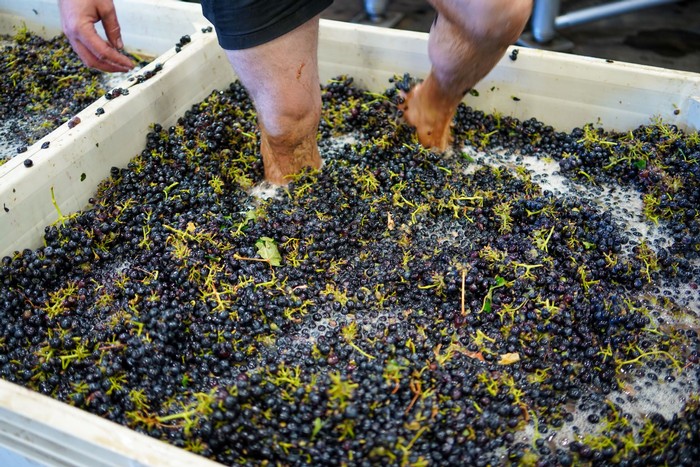
Sebastopol: Your Perfect Day Trip Done Right
Ever wished you could teleport to a place where the wine is top-notch, the vibes are chill, and there's cool shit around every corner? Well, get ready to fall head over heels for Sebastopol! If your NorCal trip revolves around Napa Valley, this Sonoma County gem is definitely worth a day trip over the hill. This charming town is brimming with hidden gems, and we're here to spill the secrets on how to experience the best of it all – with a little help from our friends at Pax Wines.
Speaking of Pax, for October we've been lucky enough to team up with these masters of Syrah and Rhône varietals to bring our MADE Club members an epic wine-tasting experience. You'll score complimentary tastings at Pax's trendy tasting room in The Barlow, plus sweet discounts on bottles to take home. It's a win-win for your taste buds and your wallet!
Now, while planning your visit over there, let's fill out the rest of your itinerary, shall we?

Kick things off with a caffeine and pastry fix at Sarmentine, a local bakery that's basically a carb-lover's paradise. Trust us, their croissants are legendary. While you're strolling through The Barlow, pop into JG Switzer for some seriously swoon-worthy artisan wool creations. Think cozy scarves, unique home décor – the perfect souvenirs (or maybe just a little treat for yourself). And don't forget to swing by WM Cofield to grab some gourmet cheeses to pair with that Pax wine you'll be snagging later! If you're still browsing, check out Acorn and Indigenous for unique gifts, fashion and knick knacks!
Next up, it's time to soak up some nature at Ragle Ranch Park. Wander the trails, find a sunny spot for a picnic, see some stunning oak trees, and maybe even do some bird watching. This is also a great place if you're traveling with your pup! Your furry friend can roam off-leash in the enclosed dog park, or on leash around the beautiful backcountry trails.
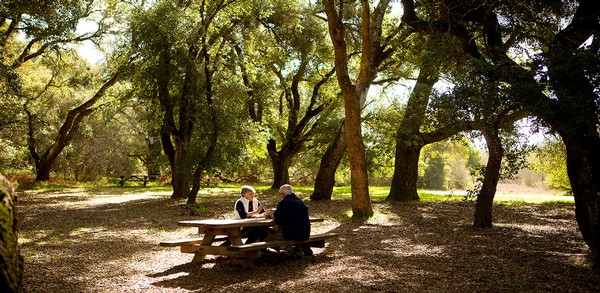
Then, head over to Pax Wines for your complimentary tasting! Their impressive lineup of Syrah and other Rhône varietals will have you feeling as fine as can be. And with that Tank MADE Club discount, you'll definitely want to stock up on a few bottles for later. Feeling peckish after all that excellent wine? Handline is the spot for a casual lunch with a focus on fresh, seasonal seafood.

For a Fall visit, definitely consider a visit to Papa's Pumpkin Patch & Ratzlaff Ranch. Think hayrides, pumpkin picking, and all the autumnal vibes. For dinner, treat yourself to a farm-to-table feast at The Redwood. Their menu is packed with local goodness, and their wine list is on point, plus they've got a bottle shop if you find something else you love! Head back to The Barlow, and cap off your epic day with expertly crafted cocktails at Fernbar, a stylish spot with a killer ambiance.
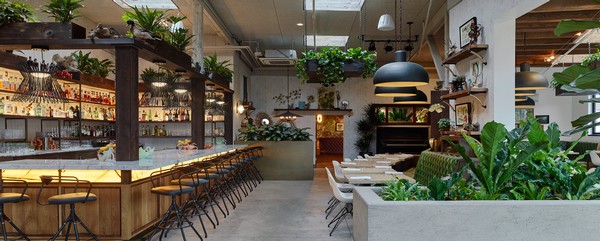
So there you have it – your ultimate guide to a perfect day in Sebastopol. With its killer wineries, charming shops, and laid-back atmosphere, you'll be planning your return trip before you head out of town. And don't forget, becoming a MADE Club Member unlocks a whole world of perks, including that sweet Pax Wines partnership! Read to dive in?
Join the MADE Club
Onde Nostre - The Inspiration
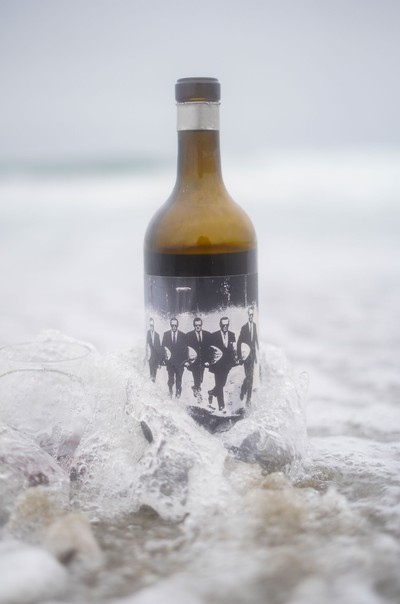
Onde Nostre is here - a dazzling red blend that primarily consists of Barbera, Sangiovese, and Freisa from San Benito County. Not only does this wine deliver captivating flavor, but when it came to vibe, we wanted to capture the essence of Italy’s surf culture. Inspired by the stunning visuals and laid-back vibe of the surf documentary Onde Nostre, this new Italian-style wine brings together adventure, freedom, and a love for nature, all with a refreshing twist.
The Italian documentary Onde Nostre offers a unique window into Italy’s lesser-known surf culture, blending breathtaking cinematography with an intimate portrayal of the surfers who navigate the country’s coasts. We couldn't think of a better starting point for our inspiration! Directed by Luca Merli and Matteo Ferrari, this film challenges the stereotypical image of Italy as a land of historical monuments, Renaissance art, and fine cuisine, revealing instead a hidden world of waves, salt air, and the deep connection between people and the ocean. In a country where surfing is often overshadowed by its more established cultural icons, Onde Nostre presents a fresh and authentic take on a growing subculture.
At its core, Onde Nostre is not just about surfing. It is a film that explores lifestyle, community, and the relationship between humans and nature. All stuff that our entire Tank crew is deeply in love with. Italy is not known for being a surfing destination in the same way that places like Hawaii, Australia, or California are. Yet, in Onde Nostre, Merli and Ferrari manage to highlight the country’s rugged coastlines, from the Mediterranean Sea to the Adriatic, showing that Italy has much more to offer than just art and architecture. The film presents surfing as a way of life — a practice rooted in simplicity, mindfulness, and respect for the natural world.
Beyond its stunning visuals, Onde Nostre also delves into the personal stories of the surfers it features. These individuals are not just athletes; they are artists, musicians, and free spirits who have found solace and inspiration in the sea. Many of the surfers in the film live modest, off-grid lifestyles, choosing to prioritize their love for the ocean over more conventional pursuits. Through their stories, the film emphasizes the values of simplicity, creativity, and community. The surfers in this film are bound not only by their passion for the waves but also by their shared philosophy of life, one that embraces freedom, exploration, and an appreciation for the beauty of nature.
We're obsessed with the way the film illuminates the subculture's subtle critique of the modern, fast-paced world. In contrast to the hustle and bustle of Italy's major cities like Rome, Milan, and Florence, the surfers featured in the documentary live in quiet coastal villages, far from the pressures of consumerism and urban life. This contrast invites viewers to reconsider their own relationship with time, space, and nature. The film suggests that there is value in slowing down, in reconnecting with the natural world, and in finding joy in simple pleasures.
Onde Nostre is not just about surfing in isolation; it highlights the intersection between surf culture and Italian identity. Surfing, while not traditionally associated with Italy, has carved out its own space within the country’s cultural landscape. The documentary captures this unique fusion of Italian aesthetics, values, and surfing ethos, showcasing how the sport has influenced art, music, and local communities. From surfboard shaping to handmade wetsuits and surf photography, it emphasizes that surfing in Italy is more than just a sport — it is a creative and cultural movement.
In the end, Italy’s surfing subculture is all about simplicity and connection – with the ocean, with each other, and with the moment. And that’s what Onde Nostre celebrates. It’s not about chasing the biggest waves or seeking out fame and fortune. It’s about the pure joy of riding the waves, being part of a community, and soaking in the beauty of Italy’s stunning coastline. Whether you find yourself traveling to the Italian or California coast, or you're just dreaming about fresh sea air and majestic waves from the comfort of your living room, we want you to crack open a bottle of this spectacular Italian blend and raise a glass to this beautiful subculture.
Non c’è niente come le nostre onde.
Buy Onde Nostre Today
A Conversation with One of Our Favorite Collaborators: Sita Kaylin
Sita Kaylin is one of those evergreen Tank collaborators. Sita is a writer, visual artist, and sex worker, who we always know will nail that vintage aesthetic that we're seeking for some of our favorite labels. Our most recent label with her can be found on our newest skin-contact wine, Arcade Summer. This Albariño-forward blend is truly out of this world, and has been the best accompaniment for summer months, but Sita's vibey 70s-style photo makes it a thousand times cooler.
We recently caught up with her to ask a few questions about life, art, and advice on the cool shit we should check out in L.A. Read it below, and while you're at it, shop her photography prints and other art, and check out her new book, Anything but a Wasted Heart.
We’re obsessed with your vintage aesthetic. What/who are some of your artistic inspirations?
Growing up in Marin County in the 70’s: the art, album covers, concert posters. I’m a flea market connoisseur, I love browsing vintage fashion magazines, paintings, and coffee table books. I’m drawn to mid-century vibes.
We’ve done so many awesome collabs with you at this point. What’s your favorite Tank label that you’ve made for us?
I’d never shot a moving vehicle - WILD CHILD
Recreating such an iconic shot (Sid & Nancy for MAKE MONEY) was exciting, but I’d never done a shadowy foreground with a light background before, I was proud of myself for figuring it out. Scouting for that was fun.
I thought capturing writing on a mirror would be easy…not so much. P.S. that was my handwriting, I did it in one go!
I learned I should have had water for my model for LICK. LoL.
Finding the Playboy pinball machine in a bar in Los Angeles was a dream!
To answer the question (fave label): I think it’s a toss between Wild Child and Arcade Summer.
My favorite wine: Make Money.
We know all the spots in the Bay Area, but what are your go-to spots in L.A.?
Restaurants:
All’Aqua - Atwater Village
Mi Piace - Pasadena (best gnocchi & beef carpaccio)
Bars:
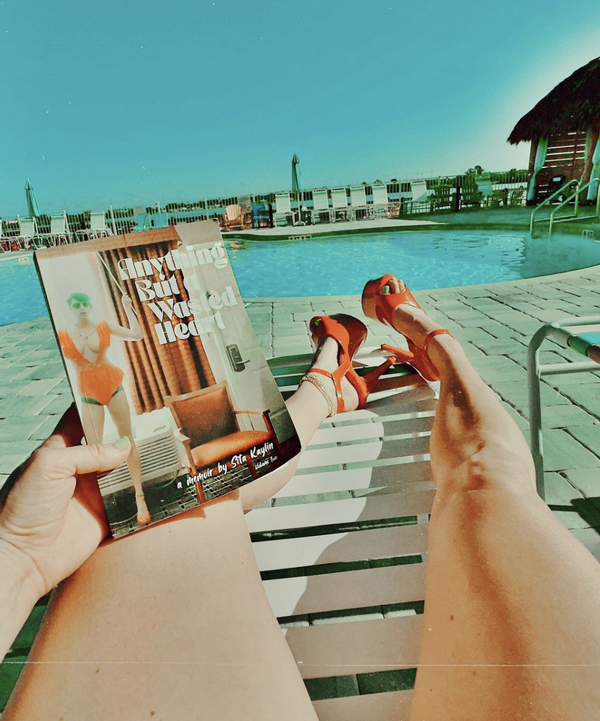
Our motto is Never Dream Alone. What’s your biggest dream?
To retire from my main profession. I’d love to sell the TV pilot I worked years writing: I LEARN AS I BLOW. I’m currently planning a new business / life adventure I’m super excited about. It’s hush-hush at the moment.
Go-to quote that you live by?
"This is my life and the meter’s running."
"Money may not buy happiness, but it sure as fuck buys freedom."
Shop Arcade Summer
Tank Mailbag - Your Questions Answered by our Winemaker
A few weeks ago we asked you to send in your burning questions for our winemaker. Today, we're back with a few of the answers for you!
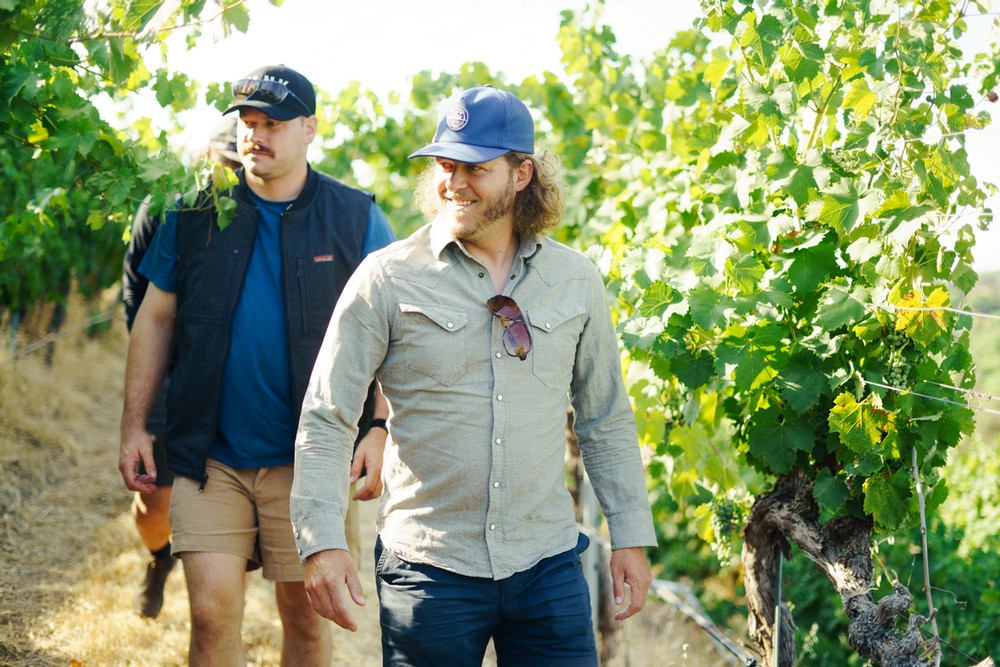
Which varietal is so difficult that you don't hesitate to accept the challenge?
Great question, I love the challenge of working with Petite Sirah. Darling Don't Cry was a way to explore its more delicate side but I am excited to continue working with the dark and brooding side as the tannins are very tricky to get right.
Where is your dream wine vacation destination?
I would love to visit Northern Italy, the high altitude and Alpine setting look magical.
Is there a winemaker you admire?
Schalk Willem-Joubert, one of my first mentors in the industry and someone who showed me the magic of casting a wide sourcing net and appreciating lesser-know areas.

What is your favorite winemaking technique/method?
I love playing around with different versions of carbonic maceration, recently appassimmento and ripasso have got me going down the rabbit hole.
Do you find it more difficult or Challenging to make a white wine or red wine?
I find white and rosé wines more challenging to make. There are less steps in the process whereas red wine production is a lot more hands on and you can push things in different directions and influence the direction a wine is heading into.
What was your very first wine you bottled?
The very first wine I bottled happened during my first year at College , we were given Chenin blanc grape juice that was frozen during harvest and then thawed for us to do our first fermentation management on (this class happened 6 months after the end of the harvest season in South Africa), as well as other winemaking tehcniques and trials, and then bottle and present them for tasting. I still have a bottle of this trial in my wine fridge.
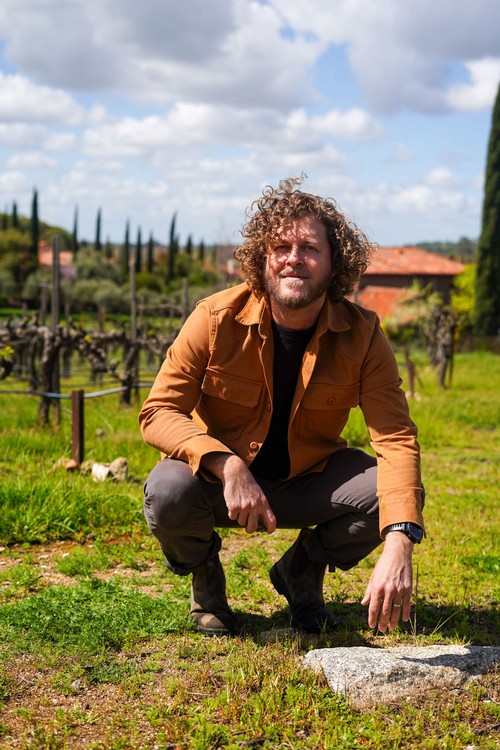
What wine styles/grapes that are currently out of fashion would you see yourself bringing back?
I am still on the hunt for some Pinotage, finding the right vineyard source has been my white whale.
Which winery is inspiring you most/ doing the most interesting/ different wines out there?
I love the passion and earth-friendly farming practiced at Tablas Creek, a lot of small winemaker owned brands like Guthrie, Paper Planes and Fine Disregard as well as many amazing young wineries from South Africa being brought in by Peter from Culture Wine Co.
What one tip would you give Tank fans to enhance their Tank wine experience?
Come in with an open mind. Even if you haven't heard of the grape or winemaking method have a little faith and be ready to try new things, you just might be surprised.
With climate change affecting the growers you work with, has that been effecting the grape cultivars you work with? Has it caused you to start experimenting with with different varieties?
Climate change is a reality that we are dealing with every year. I have very much tried to find more varieties that are adjusted to warm conditions with higher natural acidity. We are going to continue to expand our experiements with new varieties and areas so we can increase our practical knowledge. We know Barbera and Vermentino do great in a variety of locations and conditions, and there are so many lesser know varieties that I would love to see a bigger increase in plantings across the state.
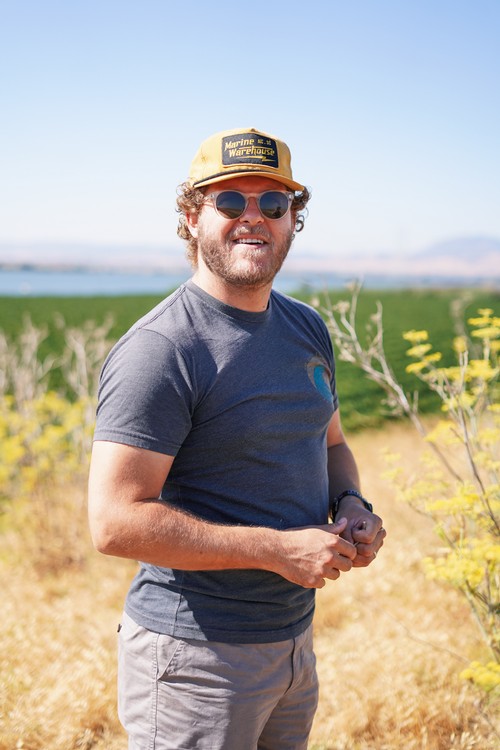
When your description of how a wine is made says “foot stomped”, is that literal? If so, how is the product cleaned afterward?
That is foot stomping in a literal sense. We get into the hand harvested bins of grapes and stomp them. Before we get into the bins we ensure that our feet are sanitized with a 70% alcohol solution for cleanliness. Because we are stomping the fruit right after it is harvested the fermentation process has not happened yet. Any organisms that might have made their way into the juice will be eliminated due to the production of alcohol. Finally most of our wines receive a dose of sulfur to eliminate micro-organisms, so there is no risks involved in this ancient process.
Why do you only make small batches, some of your wines could be a standing staple. Or is it the excitement of creating new?
We love the thrill of always challenging ourselves and experimenting, pushing the boundaries. The other challenge is in finding some of these amazing varieties and vineyards we work with, most of the time these growers and vineyards are in high demand so we only have a small allocation of grapes.
Re-making a Tank Classic
Look who’s back, dreamer.
As you know, usually when a Tank wine is gone, it’s gone for good. But for our 10th anniversary, we had a change of heart (don’t get used to it!). We thought, “What the hell? Let’s give our biggest supporters an extra special treat.” This re-release of I Am the Storm is the first of three classic hits we're bringing back in ultra-limited quantities this year. So buckle up!

Inspired by the beautiful wines of Bordeaux, we knew we wanted powerful fruit for this right from the get-go. This was where Petit Verdot came in. Petit Verdot is an underdog. It's underrated and typically not seen on its own or as the star of blends because of its intensity. Bertus and our team wanted to give this varietal a chance to shine, and you better believe they did just that.

We first bottled I Am the Storm in 2015, during our Hemingway phase. We snagged a classic Corona #3 typewriter and pounded out this audacious message. It just felt right. To every challenge and heartbreak thrown our way: you can’t mess with this crew. After 10 years of ups and downs (and nothing we’d give up for the world), this message feels even more poignant now than it did at its original creation.

The empowering message on the bottle has become iconic among the Tank family. We've been inspired by cancer survivors who embraced this ethos during their battles. We've seen I Am the Storm banners proudly displayed by first responders and frontline healthcare workers. We've even witnessed these words tattooed on bodies as a beacon of strength. We never anticipated just how deeply this wine would resonate with our community. That's why we had to bring it back. Just this once.
This 2022 blend, like the original, features 48% Petit Verdot, with some Merlot, Cabernet Sauvignon, and Cabernet Franc along for the ride. All this fruit hails from the NAPA FREAKING VALLEY, where some of the planet’s most incredible Bordeaux varietals are found.
Yes, we said we'd never repeat a wine, but hear us out. Through a mix of grit, audacity, and passion, we've survived a decade as a winery. For ten years, we've faced down fires, health crises, economic upheavals, and cease-and-desist orders (yeah, you know who you are) and come out stronger. We think pretty much everyone can relate to this kind of tenacity in some way or another, no matter what area of life we’re talking about, so there couldn’t be a better time to share it with our fans.
The 2022 Vintage of I Am the Storm is now SOLD OUT, but stay tuned for our other re-releases coming later this year! Make sure you're in the MADE Club so you have access as soon as they drop.
JOIN MADE

Hella Fizz X Lemon Scones
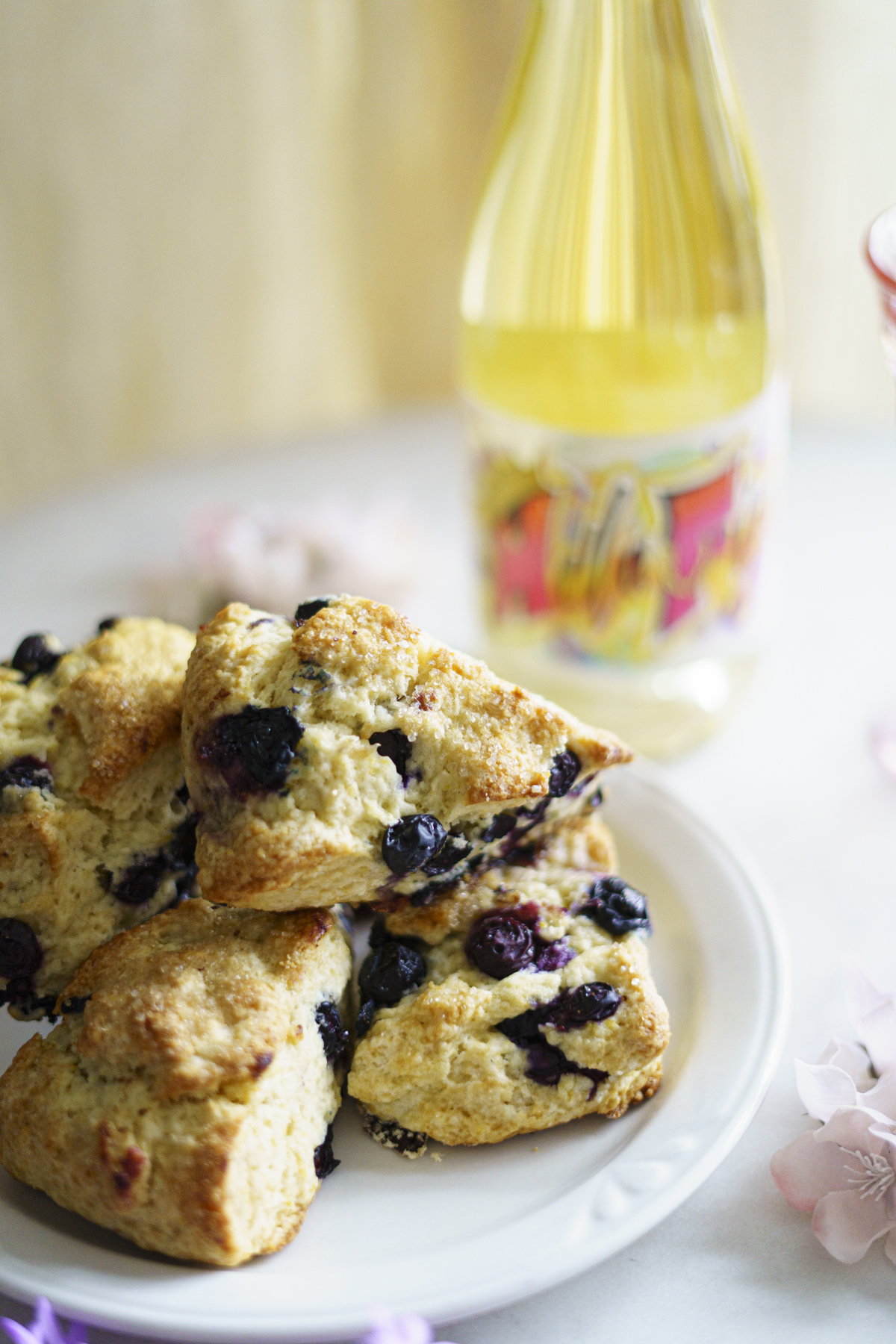
Ingredients
2 cups (250g) all-purpose flour (spooned & leveled), plus more for hands and work surface
6 Tablespoons (75g) granulated sugar
1 Tablespoon fresh lemon zest
2 and 1/2 teaspoons baking powder
1/2 teaspoon salt
1/2 cup (8 Tbsp; 113g) unsalted butter, frozen
1/2 cup (120ml) heavy cream (plus 2 Tablespoons for brushing)
1 large egg
1 and 1/2 teaspoons pure vanilla extract
1 heaping cup (140g) fresh or frozen blueberries (do not thaw)
for topping: coarse sugar
Lemon Icing
1 cup (120g) confectioners’ sugar
3 Tablespoons fresh lemon juice
Instructions
Whisk flour, sugar, lemon zest, baking powder, and salt together in a large bowl. Grate the frozen butter using a box grater. Add it to the flour mixture and combine with a pastry cutter, two forks, or your fingers until the mixture comes together in pea-sized crumbs. Place in the refrigerator or freezer as you mix the wet ingredients together.
Whisk 1/2 cup heavy cream, the egg, and vanilla extract together in a small bowl. Drizzle over the flour mixture, add the blueberries, then mix together until everything appears moistened.
Pour onto the counter and, with floured hands, work dough into a ball as best you can. Dough will be sticky. If it’s too sticky, add a little more flour. If it seems too dry, add 1-2 more Tablespoons heavy cream. Press into an 8-inch disc and, with a sharp knife or bench scraper, cut into 8 wedges.
Brush scones with remaining heavy cream and for extra crunch, sprinkle with coarse sugar. (You can do this before or after refrigerating in the next step.)
Place scones on a plate or lined baking sheet (if your fridge has space!) and refrigerate for at least 15 minutes.
Meanwhile, preheat oven to 400°F (204°C).
Line a large baking sheet with parchment paper or silicone baking mat. After refrigerating, arrange scones 2-3 inches apart on the prepared baking sheet(s)
Bake for 22-25 minutes or until golden brown around the edges and lightly browned on top. Remove from the oven and cool for a few minutes before topping with lemon icing.
Make the icing: Whisk the icing ingredients together. Drizzle over warm scones.
Leftover iced or un-iced scones keep well at room temperature for 2 days or in the refrigerator for 5 days.
Serve with Hella Fizz and enjoy!

Recipe Credit: Sally's Baking Recipes
A History of Winemaking in Paso Robles

The history of winemaking in Paso Robles spans over two centuries, dating back to the 18th Century. The climate of warm days and cool nights, alongside a great diversity of soil types has led to the thriving wine community that exists there today, and one that we are super stoked to join!
Winemaking in Paso Robles traces its roots back to Spanish missionaries who were establishing their missions along the California Coastline. These missionaries, including those at nearby San Miguel Arcángel, planted vineyards to produce sacramental wines for religious ceremonies.
In the mid-19th century, settlers from Europe, particularly Italy and France, began arriving in Paso Robles. Much of this was due to the famous Gold Rush taking place in California at the time. Recognizing the area's potential for grape growing, they planted vineyards and established small wineries. However, winemaking in Paso Robles remained relatively modest compared to other regions in California at this time.
There's some dispute over which wineries were the first to establish themselves in Paso Robles. According to some, it was Andrew York a rancher from Indiana, who planted a Zinfandel vineyard in the late 1870s. Within a few years, he found that the vines were yielding more than he could market. Due to this issue, he established Ascension Winery, which operated until 2001.
Shortly after York’s early success, immigrant farming families settled in the area. Ernst family arrived from Geneseo, Illinois in 1884 and over the next 20 years planted 25 varieties of wine grapes, and their wines began to receive great acclaim. In 1886, Gerd Klintworth planted a vineyard in area and produced the first white wine in the region. The Frenchman Adolph Siot also put in Zinfandel grapes in an area west of present-day Templeton sometime around the mid-1850s. The vineyard was sold to the Rotta family in 1908 and is still there today!
Polish Statesman, Ignace Paderewski, planted Petite Sirah and Zinfandel in the Adelaida District some time around 1914. In 1933 Paderewski’s wine was made at the York Mountain Winery and these went on to become award-winners, expanding the recognition for Paso Robles as a premier wine destination. Around the same time, Italian families, Dusi, Martinelli, Vosti, and Bianchi began making wine that is still being farmed today by the third and fourth generations of the families.

Like many wine regions, Paso Robles faced challenges, including diseases like phylloxera and the economic downturns of the late 19th and early 20th centuries. Prohibition dealt a significant blow to the wine industry nationwide during 1920 to 1933, forcing many vineyards in Paso Robles to be converted to walnut, almond, or olive oil production. Some wineries managed to stay afloat during the time by producing wine for medicinal or sacramental purposes.
Following the repeal of Prohibition in 1933, Paso Robles, like other wine regions, began to recover. However, it wasn't until the late 1960s and early 1970s that a new era of winemaking dawned in the region. Dr. Stanley Hoffman, with guidance from U.C. Davis and enologist Andre Tchelistcheff, planted some of the region’s first Cabernet Sauvignon, Pinot Noir, and Chardonnay. He did so on his 1,200-acre ranch, located next to the old Paderewski Ranch in the hills of Adelaida, about five miles west of town. Visionary pioneers, inspired by the potential of Paso Robles' terroir, started planting vineyards and founding wineries, laying the groundwork for the modern wine industry in the area. The Hoffman Mountain Ranch Winery was the first large-scale winery in the region
Paso Robles gained official recognition as an American Viticultural Area (AVA) in 1983, acknowledging its distinct terroir and the quality of wines produced in the region. This designation helped elevate Paso Robles' status within the global wine community and attracted investment and talent to the area. Over the following decades, the number of wineries and vineyards in Paso Robles grew exponentially, with an increasing focus on producing premium wines.
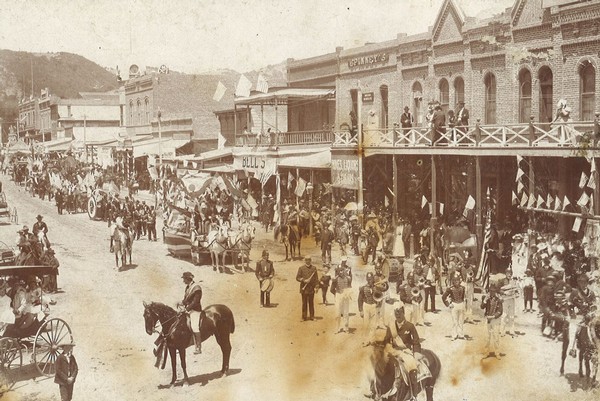
One of the defining characteristics of Paso Robles' wine scene is its diversity. The region boasts a wide range of microclimates, soil types, and elevations, allowing for the successful cultivation of numerous grape varieties. Winemakers in Paso Robles have embraced this diversity, experimenting with both traditional and non-traditional grape varieties and winemaking techniques, resulting in an exciting array of wines that showcase the region's versatility and innovation.
In recent years, sustainability has become an increasingly important focus for Paso Robles wineries. Many producers are implementing environmentally friendly practices in the vineyard and winery, such as organic farming, water conservation, and renewable energy use, in an effort to preserve the region's natural resources for future generations. Additionally, the Paso Robles wine community is known for its spirit of collaboration and camaraderie, with winemakers frequently coming together to share knowledge, resources, and support one another.
30 Minute Mole to Pair with G-Funk
Authentic Mole sauce is a time-consuming labor of love, and a little intimidating! We recently found same incredible mole tacos at NixTaco in Roseville on a vineyard trip, and we were blown away. Luckily for you, we've got a shortcut that can curb those cravings. We recommend putting these on chicken tacos, or just dipping your fave protein or roasted vegetable right in! However you have it, definitely pair it with our newest Syrah-dominant blend, G-Funk, for an unforgettable explosion of flavor.
30 Minute Mole Sauce:
Ingredients
3 cups unsalted vegetable broth or water
3 tablespoons neutral oil, such as canola
3 dried pasilla chiles, stemmed and seeded
4 dried guajillo chiles, stemmed and seeded
1 medium yellow onion, coarsely chopped
4 garlic cloves, minced
6 tablespoons unsalted roasted natural peanut butter or almond butter
3 tablespoons tahini
2 tablespoons turbinado or raw sugar
2 tablespoons cacao or unsweetened cocoa powder
¼ cup dark chocolate chips or chunks
1 tablespoon dried oregano, preferably Mexican
¼ teaspoon plus ⅛ teaspoon ground cumin
¼ teaspoon ground cinnamon
16-inch corn tortilla, toasted, or 1 tostada
Salt and pepper
Instructions
Heat broth or water in a small pot over medium-high until steaming; remove from heat. Meanwhile, heat 2 tablespoons oil in a medium pot over medium. Add all the dried chiles and sear until the begin darkening, turning constantly so they don’t burn, 1 to 2 minutes. Transfer chiles to the hot broth to rehydrate for 10 minutes. Set a bowl over the chiles to keep them submerged.
Add another tablespoon of oil and the onion to the same pot. Cook over medium, stirring occasionally, until lightly browned, about 5 minutes. Add the garlic and cook, stirring frequently, until lightly toasted, about 1 minute. Transfer to a blender, along with the chiles and their soaking liquid, the peanut butter, tahini, sugar, cacao, chocolate, oregano, cumin, cinnamon and toasted tortilla. Blend until completely smooth and creamy. Season to taste with salt and pepper.
Pour the mole back into the same medium pot and set over high heat. Once the mole starts to bubble, lower heat to medium and simmer, stirring every couple of minutes. Keep stirring for at least 10 minutes and up to 30 minutes. Use immediately or refrigerate for up to a week!
The History of Punk Rock's American Sanctuary
For the release of this year's Rosé, Adult Toys, we were inspired by the aesthetic of 70s and 80s Punk Rock concert posters and flyers, and the spirit of New York's former home of the punk rock spirit, The CBGB. We say: it's the season for punk rock Rosé, so we thought there was no better time for a run-down of CBGB itself, tracing its origins, its heyday, and its enduring legacy.
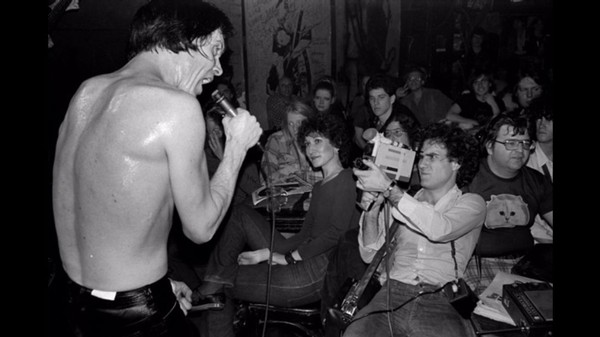
Since its inception in the 1970s, CBGB has stood as an icon of rebellion, creativity, and innovation in the world of music. From its humble beginnings as a small bar in New York City's Bowery neighborhood to its status as a legendary venue that helped launch some of the most influential bands in rock history, CBGB has left an indelible mark on popular culture. Funnily enough, The CBGB wasn't created with intended punk rock vibes. The name itself actually stands for "Country, Bluegrass, and Blues," and was founded in 1973 by Hilly Kristal. Originally intended to showcase music from those genres, the venue quickly became a haven for emerging punk and new wave bands. The awning dawning it's namesake also read, "OMFUG," which stood for "Other Music for Uplifting Gourmandizers." What is a gourmandizer? Well, it's a voracious consumer of music.
Situated in Manhattan's Bowery district, a gritty neighborhood known for its dive bars and impoverished residents, CBGB provided a raw and unfiltered space for musicians to perform. The venue's interior was decidedly unglamorous, with graffiti-covered walls, sticky floors, and a bare-bones stage. Despite its less-than-ideal conditions, CBGB attracted a dedicated following of artists, misfits, and music enthusiasts who were drawn to its authentic atmosphere and the promise of discovering the next big thing.
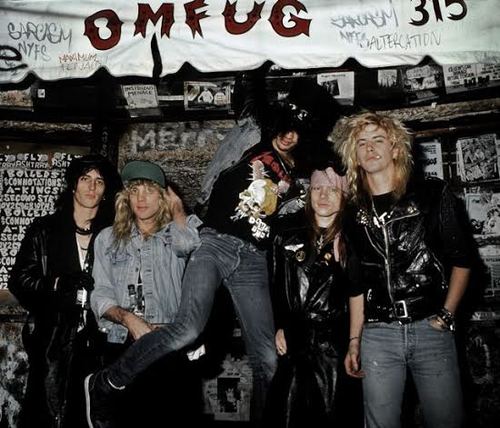
The late 1970s and early 1980s marked the heyday of CBGB and the punk rock movement. The popularity of Disco in the 1970s gave way to a lot of disgruntled rock musicians who were looking for a space to experience energetic Rock n' Roll. Bands like The Ramones, Blondie, Talking Heads, Patti Smith, and Television cut their teeth at CBGB, playing marathon sets to packed crowds of fans and industry insiders alike. Many of the CBGB's first performers were unknowns, and made minimal money from the door cover-charge, building a fan base and growing their admirers. In 1976 the CBGB was finally able to pay for itself. The venue became ground zero for the burgeoning punk scene, providing a platform for bands to express themselves freely and connect with audiences who shared their outsider sensibilities.
CBGB's influence extended beyond its role as a music venue. It served as a meeting place for like-minded individuals who embraced the DIY ethos of punk culture, fostering a sense of community and camaraderie among artists and fans. The venue also played a crucial role in the development of punk fashion, with its patrons sporting leather jackets, ripped jeans, and studded accessories as symbols of rebellion and nonconformity.
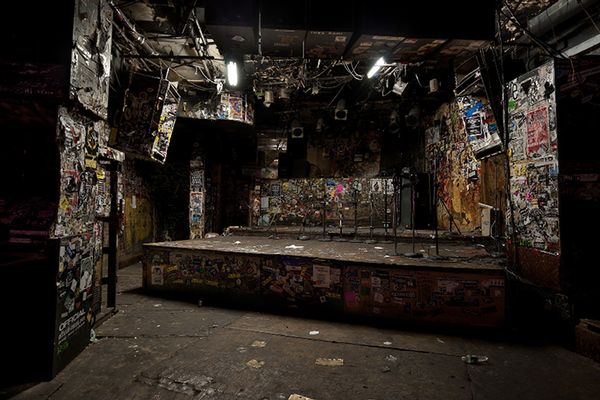
Despite its cultural significance, CBGB faced numerous challenges throughout its existence. While The Bowery was an unsavory neighborhood when CBGB first opened its doors, this began to drastically change and gentrification and rising rents threatened to displace the venue, while changing musical tastes and the commercialization of punk rock posed additional hurdles. In October 2006, after a protracted legal battle with its landlord, CBGB was forced to close its doors for good. The final show was performed by the legendary, Patti Smith. Although CBGB may have ceased to exist as a physical space, its legacy strongly lives on in music history. The bands that got their start at CBGB went on to achieve worldwide acclaim, shaping the course of popular music till the present day! The venue's DIY ethos and embrace of artistic experimentation continue to inspire musicians and artists around the globe, from performance art, to theatre, dance, musicians of all genres, and beyond.
CBGB remains a symbol of rebellion, creativity, and resilience. Despite its humble beginnings and eventual demise, the venue's impact on music and popular culture are essential to the evolution of art that we know. As long as there are artists willing to challenge the status quo and push the boundaries of creativity, CBGB will continue to serve as a beacon of inspiration and a testament to the enduring spirit of rock 'n' roll.
